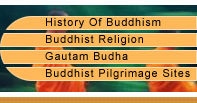The term Monastery has been derived from a Greek word 'monasterion', which means the habitat and workplace of a community of monks or nuns. In Buddhism, a monastery is known as Vihara or Gompa. The exact time of the emergence of Buddhist monasteries is not known. It is believed that they emerged somewhere around the fourth century BC. The practice of vassa, the retreat undertaken by Buddhist monks and nuns during the South Asian rainy season, is said to have been the inspiration behind the Buddhist monastery.
Under Vassa, wandering Buddhist monks and nuns were confined in a particular place for the monsoon season, lasting for approximately three months. This was done to prevent them from upsetting new plant growth or becoming stranded in stormy weather. These retreats were organized in the pavilions and parks donated to the sangha, by wealthy supporters. With the passage of time, this routine of staying in the retreats during the vassa retreat advanced into an austere lifestyle for the nuns and the monks.
They started living in the monasteries as a Sangha, throughout the year. Initially, Buddhist monasteries were used as residence by the Sangha, as a whole. However, later this practice changed in some of the counties and only the monks started residing in the monasteries. For the nuns, nunneries started coming up. In the Indian subcontinent, Buddhist monasteries progressively grew into centers of learning. They served as the places where philosophical principles were developed and debated. In some of the countries, monasteries also became large landowners.
Peasant families worked on the land of the monastery and in exchange, gave the monks a portion of their yearly crop. While in others, the monastery came under the ownership of a single monk, who passed it on from generation to generation. In the Theravada traditions of Southeast Asia and Sri Lanka, one can also find forest monasteries. Theses monasteries do not perform scholarship or ceremonial duties. Rather, they are devoted to the study of Buddhist meditation.
This write-up on Buddhist monastery/monastry contains information on concept of Buddhist monastery. Know more on Buddhist monasteries.
Buddhist Temples: Buddhist Monastery





